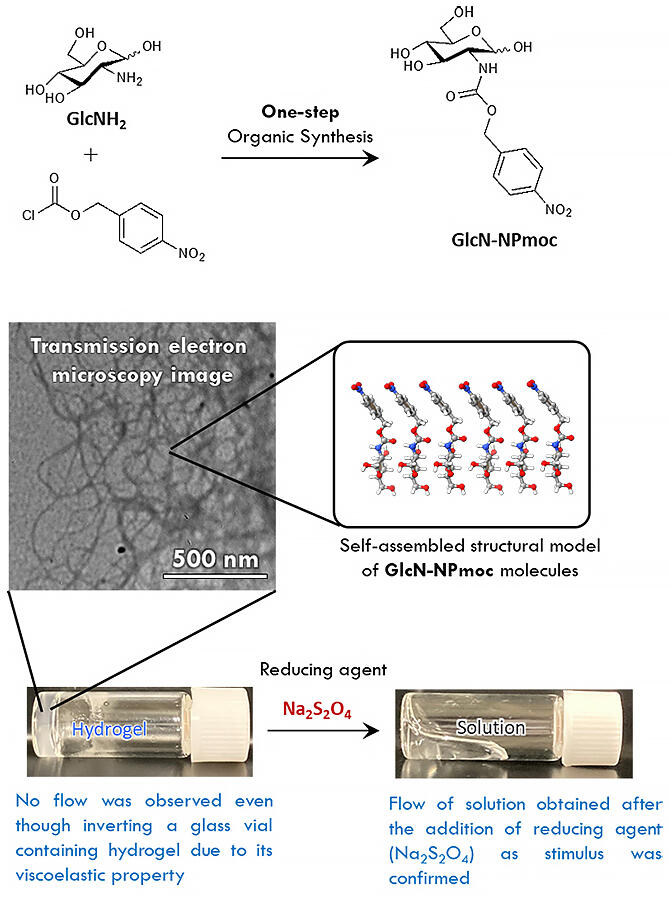Professor Masato Ikeda, Department of Chemistry and Biochemistry Science, Faculty of Engineering, Gifu University and Sayuri Higashi, Research Fellow, United Graduate School of Drug Discovery and Medical Information Sciences, Gifu University, synthesized a new amino sugar derivative by introducing a chemically reactive nitrophenyl molecule into an amino sugar in one step. It turned into a jelly-like substance called a supramolecular hydrogel with reduced fluidity. Professor Ikeda stated, "I specialize in research on the assembly of small molecules for the development of nano-sized structures. Through this research we have successfully synthesized new molecules through the introduction of chemically reactive artificial molecules into amino acids, and found that a nanofiber was formed. When considering how to synthesize new molecules and materials from sugar, I hypothesized that the modification of amino acids to amino sugars would aid in the creation process."
In the synthesized jelly-like substance, amino sugar derivatives spontaneously self-assembled in water. The researchers clarified that these self-assembled substances were composed of nanofibers with diameter in the realm of tens of nanometers (approximately 1 / 10,000 of the diameter of a hair). In addition, this jelly-like material was dissolved via reduction reactions. The aminosaccharide derivatives synthesized in this study are hydrogels that form a jelly-like substance and respond to a reduction stimulus. Such molecules can be characterized as the smallest class of sophisticated molecules that are known globally.

Credit: Gifu University
Professor Ikeda speculated that since 99% or more of this jelly-like substance is made from water, it will lead to the development of materials that can be applied for medical treatments and in the cosmetic industry. Since the development of this new molecule, he has been fascinated by the fact that it can be assembled in various ways much like Lego blocks and can be used to compose nano-sized structures by changing its shape and introducing breaks. Living organisms and viruses are also structures in which such molecules can be assembled. Development of an artificial cell-like structure is a common goal of researchers worldwide, and he wants to aim for that.
This article has been translated by JST with permission from The Science News Ltd.(https://sci-news.co.jp/). Unauthorized reproduction of the article and photographs is prohibited.




